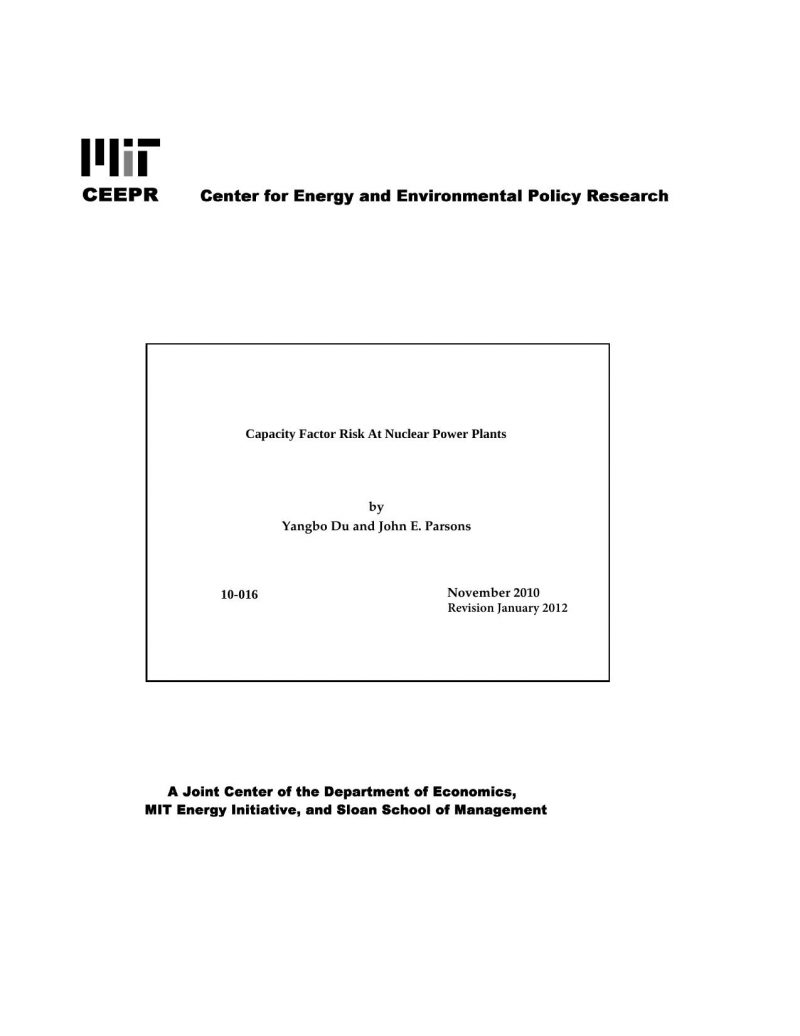Capacity Factor Risk At Nuclear Power Plants
Yangbo Du and John E. Parsons
10-Nov
We develop a model of the dynamic structure of capacity factor risk. It incorporates the risk that the capacity factor may vary widely from year-to-year, and also the risk that the reactor may be permanently shutdown prior to the end of its anticipated useful life. We then fit the parameters of the model to the IAEA’s PRIS dataset of historical capacity factors on reactors across the globe. The estimated capacity factor risk is greatest in the first year of operation. It then quickly declines over the next couple of years, after which it is approximately constant. Whether risk is constant or increasing in later years depends significantly on the probability of a premature permanent shutdown of the reactor. Because these should be very rare events, the probability is difficult to estimate reliably from the small historical sample of observations. Our base case is parameterized with a conservatively low probability of a premature permanent shutdown which yields the approximately constant variance. Our model, combined with the global historical dataset, also yields relatively low estimates for the expected level of the capacity factor through the life of the plant. Our base case estimate is approximately 74%. Focusing on alternative subsets of the data raises the estimated mean capacity factor marginally, but not significantly, unless the sample chosen is restricted to selected countries over select years. This emphasizes the need for judgment in exploiting the historical data to project future probabilities.



